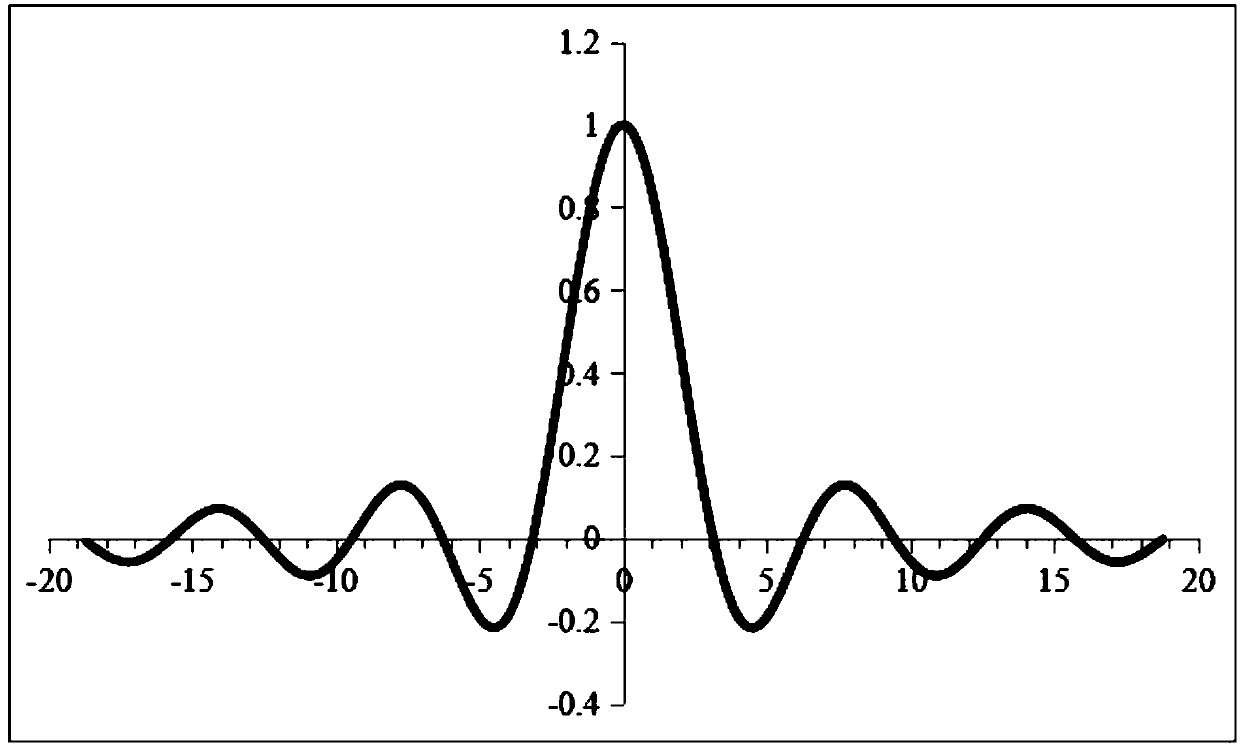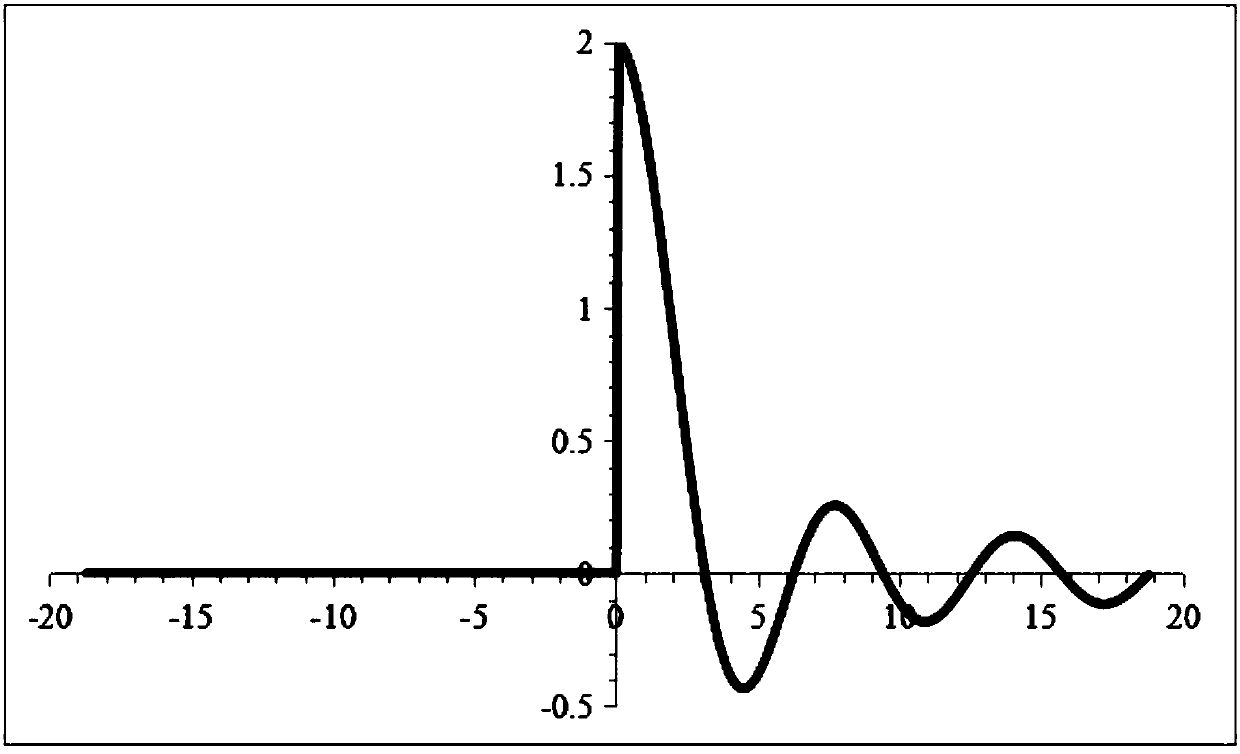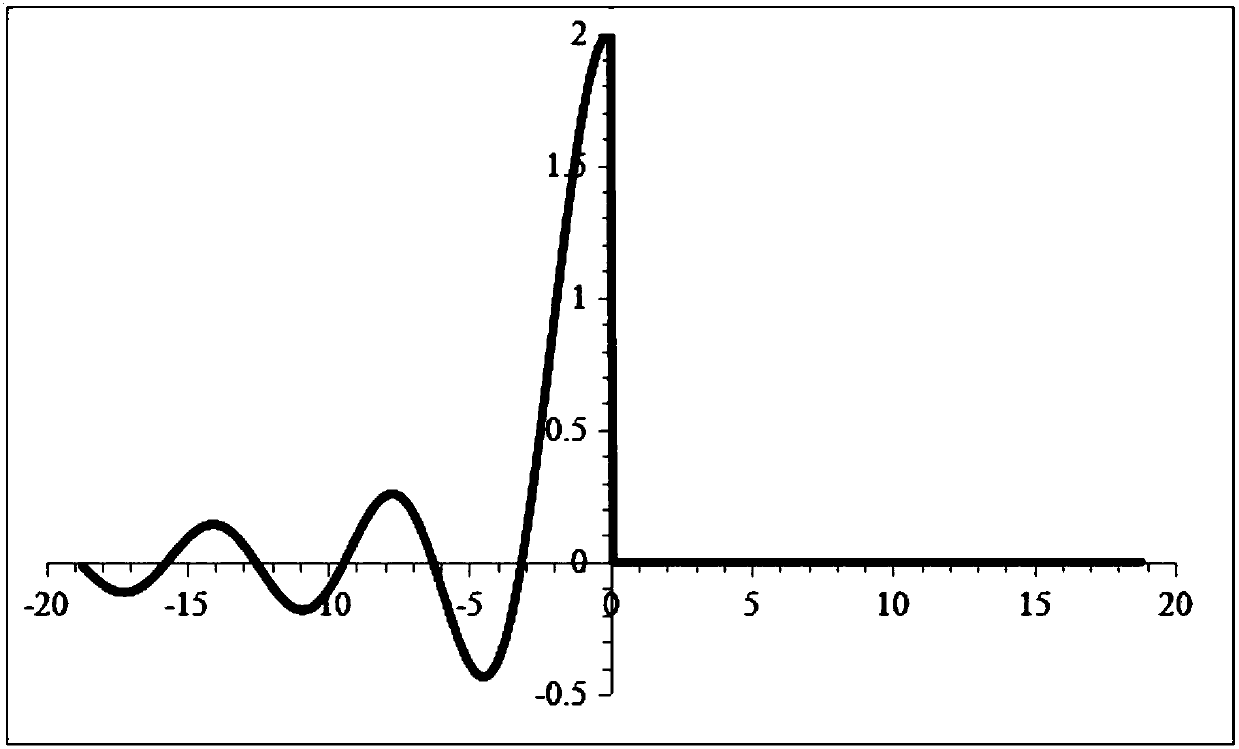Magnetic resonance imaging method based on Fourier transform magnetic resonance imaging overlap-type peak shape
A technology of Fourier transform and magnetic resonance imaging, which is applied in the direction of using nuclear magnetic resonance image system for measurement, magnetic resonance measurement, and magnetic variable measurement, can solve the problems of spatial resolution reduction, signal noise reduction, etc., and achieve enhanced signal strength , strong applicability, and the effect of improving resolution
- Summary
- Abstract
- Description
- Claims
- Application Information
AI Technical Summary
Problems solved by technology
Method used
Image
Examples
Embodiment 1
[0156] Existing magnetic resonance imaging performs Fourier transform according to the pre-set magnetic field gradient frequency (or gradient phase) and sampling pixels. As long as the number of sampling points is large enough, the signal frequency will not be distorted. Whereas according to the equations in the magnitude peak shape of the Fourier transform provided above, including: Equation 10, Equation 11 or Equation 12, there is no need to predict additional parameters such as Figure 8 As shown, the raw data collected in k-space provides both signal strength and gradient frequency values. In order to ensure the gradient proton response peaks in the overall measurement range in detail, all sampling frequency components ω 0 Doing the superposition operation is equivalent to taking N times the time to complete the superposition of N components. The novel Fourier transform operation can be further optimized to group the frequency components appropriately. According to the a...
Embodiment 2
[0158] According to the existing Fourier transform theory, the magnetic resonance signal f(t) composed of harmonics needs to be discretely sampled, and the number of samples is set to N, and a group of discrete signal points f(0), f(1), f are intercepted (2),···,f(k),··,f(N-1). Discretized Fourier transform results in N data F(0), F(1), F(2),··F(k),···,F(N-1), expressed in matrix
[0159]
[0160] In the formula, W=exp(-i2π / N) of the N×N Fourier transform matrix.
[0161] According to the superposition theory, add a diagonal superposition matrix to the original Fourier transform matrix, and get:
[0162]
[0163] Further, in this embodiment, it is possible to determine whether the diagonal matrix elements are 2 or 0, or a decimal close to 0, column by column, or within the preset resolution condition ΔN area. Since the magnetic resonance imaging sets the number of pixels based on computer binary, the diagonal of the matrix can be sorted by 2, 0, 2, 0... according to th...
Embodiment 3
[0171] According to the two symmetrical superposition functions proposed above, see Equation 5.1 and Equation 5.2, the front and back left (right) superposition and right (left) superposition can be performed synchronously on adjacent harmonic signals, as shown in Figure 15 As can be seen, the partially overlapping adjacent two peaks shown by the dotted line can achieve the resolution equivalent to four times the Fourier transform, and the solid line shows the effect of the superposition transform.
[0172] Figure 13 In the MRI of the artificial membrane, after expanding the k-space data by one time, the method 1 is used to perform Fourier superposition transformation, and the obtained extremely clear as Figure 16 Images shown with 1024x1024 pixel spatial resolution.
PUM
 Login to View More
Login to View More Abstract
Description
Claims
Application Information
 Login to View More
Login to View More - R&D
- Intellectual Property
- Life Sciences
- Materials
- Tech Scout
- Unparalleled Data Quality
- Higher Quality Content
- 60% Fewer Hallucinations
Browse by: Latest US Patents, China's latest patents, Technical Efficacy Thesaurus, Application Domain, Technology Topic, Popular Technical Reports.
© 2025 PatSnap. All rights reserved.Legal|Privacy policy|Modern Slavery Act Transparency Statement|Sitemap|About US| Contact US: help@patsnap.com



